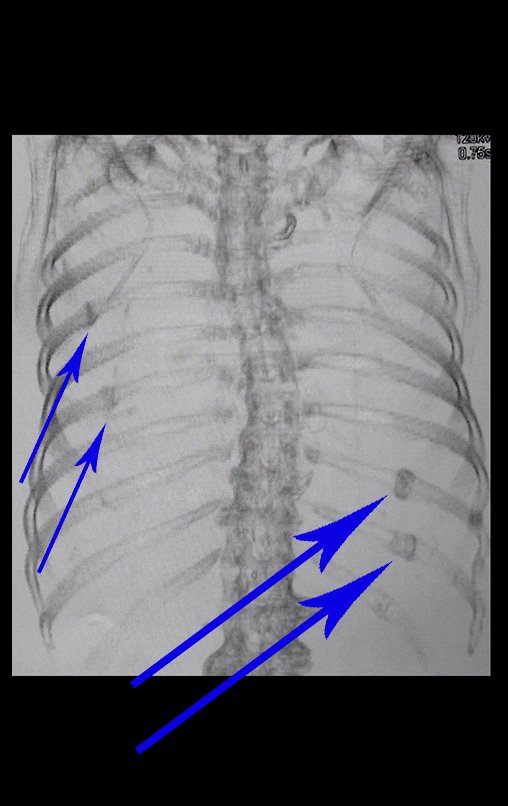
Differential Diagnosis Lung Nodule and Fracture Callus
This finding was interpreted as a pulmonary nodule and the patient was referred to an oncologist with suspected primary lung cancer. Lung nodule?
During the diagnostic investigation, tests were requested to stage the lesion and bronchoscopy for biopsy. Among the exams, a chest tomography was performed, figures 3 and 4.
In the careful analysis of the images from this tomography, the condensing area observed in the radiographs, which suggested the presence of a primary nodule in the pulmonary parenchyma of the lower lobe of the left lung, was not found!?.
However, changes were found in the 90 and 100 left posterior costal arch, figures 5 and 6.
Figures 9, 10 and 11 clarify the false interpretation of fracture callus X pulmonary nodule .
In the history, the patient reported falling down stairs two years ago. He had woken up in the early hours of the morning to go to the bathroom and fell, rolling down the stairs and suffering a broken right wrist and several ribs.
Accurate clinical history + adequate imaging tests + careful analysis are essential for the correct diagnosis.
Case Author
Author: Prof. Dr. Pedro Péricles Ribeiro Baptista
Orthopedic Oncosurgery at the Dr. Arnaldo Vieira de Carvalho Cancer Institute
Office : Rua General Jardim, 846 – Cj 41 – Cep: 01223-010 Higienópolis São Paulo – SP
Phone: +55 11 3231-4638 Cell:+55 11 99863-5577 Email: drpprb@gmail.com












